Are you looking for a way to get longer, fuller eyebrows and if you’re ready to take your beauty routine to the next level? Then you can consider microblading, because microblading is one of the hottest trends in cosmetic treatments right now.
Microblading is a semi-permanent brow technique that fills in sparse areas and creates a natural look without traditional tattooing. Microblading is a semi permanent form of brow tattooing. We know thinking of microblading as a “Brow Tattoo” sounds a little bit scary, but the microblading doesn’t last forever and it has a surprisingly easy and painless healing process, when done properly.
Microblading is a semi-permanent option for improving brow shape and definition. Microblading, also offers a variety of other benefits as well, From adding wow factor to everyday looks or making a big impact during special occasions.
However, before getting microblading treatment, it’s important to know everything about the Microblading treatment. In this blog post, we’ll discuss, what is microblading, how to prepare for your first appointment, what happens during the microblading appointment, benefits and potential side effects, how much does it cost and how long does it last and also you will know the aftercare tips.
Read on to find out what exactly microblading is and why it’s becoming the hottest trend in the cosmetic industry.
What is Microblading
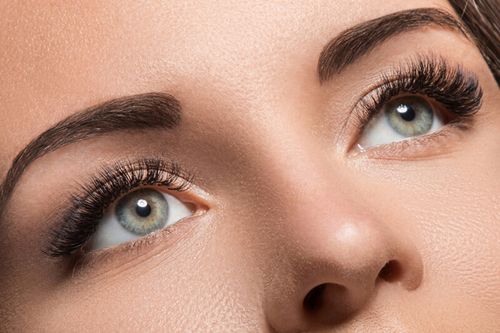
Microblading is a semi-permanent makeup treatment that involves a blade-shaped tool with very small, and barely visible needles. The small needles help to create hair-like strokes in the skin to enhance or reshape your eyebrows. The procedure involves using a pigment that is matched to the natural color of your hair and skin tone.
The strokes are made in the top layer of the skin and mimicking the look of natural eyebrow hairs. This treatment is a great option for those who want to enhance their natural brows or create a more defined shape without the commitment of traditional tattooing. Microblading can also be used to fill in sparse or thinning brows or even create a completely new brow shape.
Microblading Before and After Pictures
To help you, I thought of sharing some pictures of Microblading Before and after to get an idea of potential results of microblading treatment. Microblading can be used to give your eyebrows a desired and defined look.
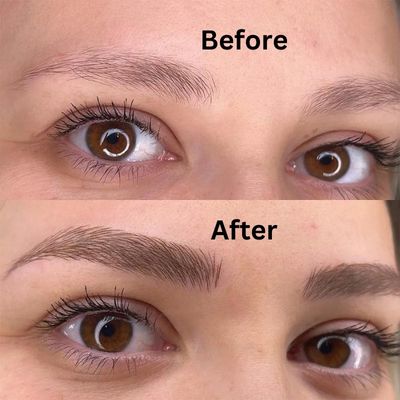
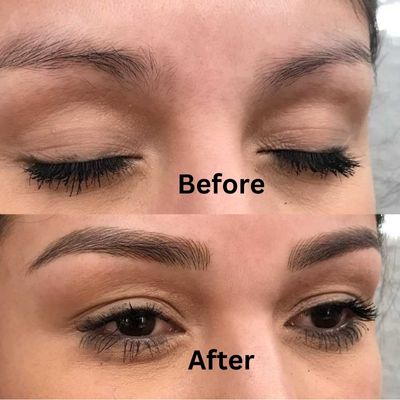
How to prepare for Microblading Appointment,
Microblading is a quick, and affordable process. Here are some steps you can take to prepare for your microblading appointment:
- Find a reputable salon or professional technician for your microblading treatment,
- Make sure to understand the process, so that you know what to expect during your appointment,
- Don’t wear makeup on appointment day,
- Avoid Waxing or Tinting your eyebrows for at least 3 to 4 days before your appointment,
- Avoid direct sun exposure for at least a week before your appointment, Because the sun exposure can cause the skin to be more sensitive and also affect the color of the pigment,
- Avoid drinking alcohol for at least 48 hours and avoid caffeine for at least 24 hours before your appointment,
- Make sure your face is clean, free of makeup or oils before your appointment,
- Be clear about your your desired shape or brig a picture of your desired look you want to achieve,
- Avoid certain medications such as blood thinners, because it can cause bleeding or make the healing process more difficult,
- Talk to your technician about your allergies or medications that you are currently taking, to see if they will affect the procedure.
- Microblading requires proper aftercare to ensure the best results. So, make sure to ask your technician for instructions on how to care for your new eyebrows,
- Follow the instructions on the day of appointment and arrive on time for your appointment,
What happens during a Microblading Appointment,
Here is a step-by-step guide of what typically happens during an microblading appointment:
- Consultation: Your technician will discuss your desired shape, color, and overall look for your eyebrows. The technician will also assess the current shape and color of your natural brows to determine the best pigment match.
- Numbing: Your technician will apply a numbing cream to your eyebrows to minimize any discomfort during the procedure.
- Marking: Your technician will use a pencil or pen to mark the shape of your new brows. This allows you to make adjustments before the pigment is applied.
- Microblading: The technician will start using a blade-shaped tool with very small, and barely visible needles. The small needles help to create hair-like strokes in the skin, enhance or reshape your eyebrows. The procedure involves using a pigment that is matched to the natural color of your hair and skin tone.
- Touch-Ups: The Technician will go over the strokes again to ensure that the color is even and the shape is symmetrical.
- Aftercare Tips: Finally, Your technician will provide you the instructions on how to care for your new eyebrows after the procedure. This will include avoiding certain activities, such as swimming or sweating, avoiding direct sun exposure, to avoid infection and promote the healing process.
The entire process usually takes around 2 hours to complete, including the consultation and aftercare instructions.
Note: The above is a general overview of the microblading process, and the exact steps and timing may vary depending on the technician and the individual client.
Microblading Aftercare Tips,
Microblading requires proper aftercare in order to get best results. Here are some aftercare tips to follow after an Microblading appointment:
- Avoid getting your eyebrows wet for at least a week, this includes swimming, sweating, and even showering, because water can cause the pigment to fade or blur.
- Don’t wear makeup for at least a week, this includes pencils, powders, and gels.
- Keep it clean and dry by washing it with a gentle cleanser or mild soap and water twice daily.
- Avoid touching, picking or scratching the area as this can cause the pigment to fade or blur. Because your eyebrows will likely be itchy as they heal.
- Avoid direct sun exposure to the eyebrow area for at least two weeks. Sun exposure can cause the skin to be more sensitive and can also affect the color of the pigment.
- Keep your hairs away from your brow line.
- Avoid using oil based products around the eyebrow area that could irritate the skin.
- Avoid applying any creams, ointments or other products to the eyebrow area without consulting your technician.
- Your technician will likely recommend follow-up appointments every 6 to 12 months to maintain the desired shape and color.
It’s also important to note that everyone’s healing process is different, so you may experience some redness, itching, or scabbing in the first few days after the procedure. These are all normal and will subside within a week or so.
Benefits of Microblading,
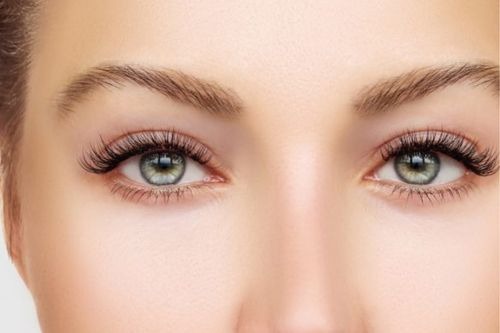
Microblading is one of the most popular ways to get fuller, longer, and desired eyebrow shape. Microblading provides several benefits, such as:
- Microblading is a safe, gentle, and a semi-permanent solution for people who want to have well-defined eyebrows without the daily maintenance of pencils, gels, or powders.
- Microblading can also help to fill in gaps, reshape or darken your eyebrows.
- Microblading techniques mimic the look of natural brow hairs, and it can give you more natural looking results.
- Microblading is a non-invasive treatment that offers long-lasting eyebrows up to 2 years with proper care and maintenance.
- Microblading is a time saving and microblading won’t smudge or smear. So you can enjoy swimming, saunas, and workouts without having to touch up your brows.
- Microblading allows you to customize the shape, color, and the overall look of your eyebrows according to you.
- Microblading treatment is extremely affordable.
- Microblading treatment is painless, safe, and effective way to get desired eyebrow shape.
- Well defined eyebrows can enhance your overall appearance and boost your confidence.
- Microblading is suitable for all skin types, including sensitive skin.
Potential Risks of Getting Microblading,
Microblading is considered a safe procedure when done by a certified and licensed technician. But like any other cosmetic procedure, it also has some potential risks. Here are some potential risks of getting microblading treatment:
- Allergic Reaction: Some people may have allergic reactions to the pigment used in the procedure. This can cause itching, Redness, and even swelling.
- Infection: If the area is not properly cleaned or if the technician does not use sterile equipment, or if you don’t follow proper aftercare tips, there is a risk of infection.
- Scarring: If the skin is not properly cared for during the healing process, there is a risk of scarring.
- Uneven Color or Shape: Microblading may result in uneven or unsatisfactory outcomes, that’s why the touch-up appointments are necessary to correct these issues.
- Pigment Migration: Over time, the pigment may migrate, causing the shape of the brows to change.
- Difficult to Remove the Pigment: It’s important to note that microblading is a semi-permanent, but it may be difficult to remove the pigment, if you are not satisfied with the results.
- Discoloration: Sun exposure, certain medications, and skin conditions can cause the pigment to change color and fade over time.
It’s important to choose a reputable salon or licensed and qualified technician, and follow the aftercare instructions to reduce these risks.
What’s the Difference Between Microblading Vs Microshading?
Microblading and Microshading are both popular and semi-permanent makeup techniques used to enhance and reshape the eyebrows. However, they are different in the way that they are applied to the skin.
Microblading
Microblading is a semi-permanent makeup treatment that involves a blade-shaped tool with very small, and barely visible needles. The small needles help to create hair-like strokes in the skin to enhance or reshape your eyebrows. The procedure involves using a pigment that is matched to the natural color of your hair and skin tone.
The strokes are made in the top layer of the skin and mimicking the look of natural eyebrow hairs. This treatment is a great option for those who want to enhance their natural brows or create a more defined shape without the commitment of traditional tattooing. Microblading can also be used to fill in sparse or thinning brows or even create a completely new brow shape.
Microshading
Microshading is also known as powder brows or ombré brows, is a semi-permanent makeup treatment used to enhance and reshape the eyebrows. Microshading uses a digital tool (such as a machine or digital pen) to create a soft, powdery finish that mimics the look of shaded brows.
The treatment involves implanting pigment into the skin using small, circular motions to create a more defined and filled in look. The pigment is matched to the natural color of your hair and skin tone. The technician will work with you to create the desired shape and color of your brows.
Difference between Microblading and Microshading
The main difference between Microblading and Microshading is the technique used to apply the pigment. The microblading focuses on the creation of individual hair strokes while microshading focuses on creating a more filled-in look.
Microblading is better for those who want to create a more natural looking eyebrow, while Microshading is better for those who want a more defined and filled in look. Microblading and Microshading areboth used to fill in sparse or thinning brows or even create a completely new brow shape.
Both Microblading and Microshading have their own pros and cons. It’s best to consult with a professional technician or dermatologist to decide which one is best for you.
How Long Does Microblading last?
Microblading results typically last anywhere between 18 to 24 months before the pigment begins to fade. It is important to note that Microblading is a semi-permanent treatment and that touch-ups are recommended every 6 to 12 months to maintain the desired shape and color.
The longevity of the procedure can vary depending on a number of factors such as the type of pigment used, the skill of the technician, and the individual’s aftercare and maintenance regimen. Factors such as sun exposure, certain medications, and certain skin conditions can also affect the longevity of the pigment.
It’s important to note that everyone’s skin is different, and the fading of the pigment can vary greatly. A touch-up may be necessary sooner for some people, while others may find that their microblading lasts longer. It’s important to consult with your technician and follow their aftercare instructions to ensure the best results and longevity of the procedure.
How Much Does Microblading Cost?
The cost of Microblading can vary depending on the location, the experience level of the technician and the specific technique used. Generally, Microblading costs anywhere between $500 to $1500. However, it can be higher or lower in some areas, and prices can vary greatly. Some high-end salons or spas may charge more, while other places may offer lower prices.
It’s also important to note that the cost of microblading usually includes the initial appointment and a touch-up appointment. This touch-up appointment is usually done 4 to 6 weeks after the initial procedure to make any necessary adjustments and ensure that the final result is satisfactory.
Can Microblading Damage Your Natural Eyebrows?
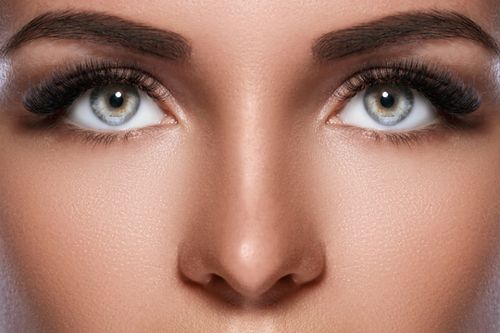
Microblading is a safe and effective procedure that can enhance your natural eyebrows. microblading pigment is implanted into the dermal layer of the skin, which is far below the surface of your natural eyebrow hair. Microblading does not damage your natural brows and will not interfere with their growth.
Microblading may even stimulate the growth of your natural brows, as the pigment acts as a filler and helps to thicken and enhance the look of your natural brows.
Is Microblading worth it?
Microblading is a great way to enhance your natural brows and get the look of fuller, more symmetrical brows. Microblading is relatively inexpensive and the results can last up to 18 months, depending on your skin type and lifestyle.
Microblading is also a much less invasive procedure than traditional eyebrow tattoos, making it a great option for those looking to enhance their brows without committing to a permanent look. Microblading can give you the beautiful, natural looking brows that you desire.
Microblading is definitely worth considering if you are looking to get a more permanent, natural-looking eyebrow shape.
FAQ’s
Is Microblading a Tattoo?
Microblading is a type of Tattoo, but it’s not permanent like a true tattoo. Microblading is a semi-permanent makeup procedure that uses a handheld tool to make small, hair-like strokes in the skin to mimic the look of natural brow hairs. The pigment is applied to the epidermis layer of the skin and creates a realistic, fuller looking brow.
On the other hand, the tattoo is a permanent form of body art that involves implanting ink into the dermis layer of the skin. Tattoos are done with a needle and machine, and the ink is inserted deep into the skin and makes them permanent.
Is Microblading only good for thin brows?
No, Microblading is not only good for thin brows. Microblading can be used to fill in sparse areas of the brow and create a more symmetrical shape. Microblading can also be used to create a completely new brow shape, darken the color of an existing brow shape, or even cover old tattoos. Microblading can be used to create a variety of looks and eyebrow shapes.
Does Microblading Hurts?
The Microblading procedure does not hurt significantly. The Microblading pen is very precise, creating tiny needle pricks on the skin that can feel like a light scratching sensation. Microblading technicians will typically apply a numbing cream before the procedure to reduce any discomfort. Most people find Microblading to be a relatively painless procedure.
Is Microblading safe for sensitive skin?
Yes, Microblading is safe for sensitive skin. Microblading technicians take many precautions to ensure that the Microblading procedure is completely safe and that the pigments used are hypoallergenic and non-toxic. Microblading technicians will always wear gloves and use sterilized equipment to prevent any potential risks. Microblading is also a less invasive procedure than other forms of makeup tattoos, making it safer for those with sensitive skin.
Conclusion
Microblading is a semi-permanent cosmetic procedure to enhance your eyebrows and create a natural, and fuller look. The procedure involves the use of a handheld tool to apply pigment to the skin in the shape of hair-like strokes. Microblading is relatively painless and safe for those with sensitive skin.
Microblading can give you the beautiful, natural looking brows that you desire and is definitely worth considering if you are looking to get a more permanent, natural-looking eyebrow shape. Microblading is considered to be a more affordable option compared to the other cosmetic treatments.
Microblading may even stimulate the growth of your natural brows, as the pigment acts as a filler and helps to thicken and add definition to the brows. Microblading is a great option for those looking to enhance their brows without committing to a permanent look.
Hopefully, you like this article, if you have any kind of questions or suggestions about the microblading, then kindly put them in the comment box.
